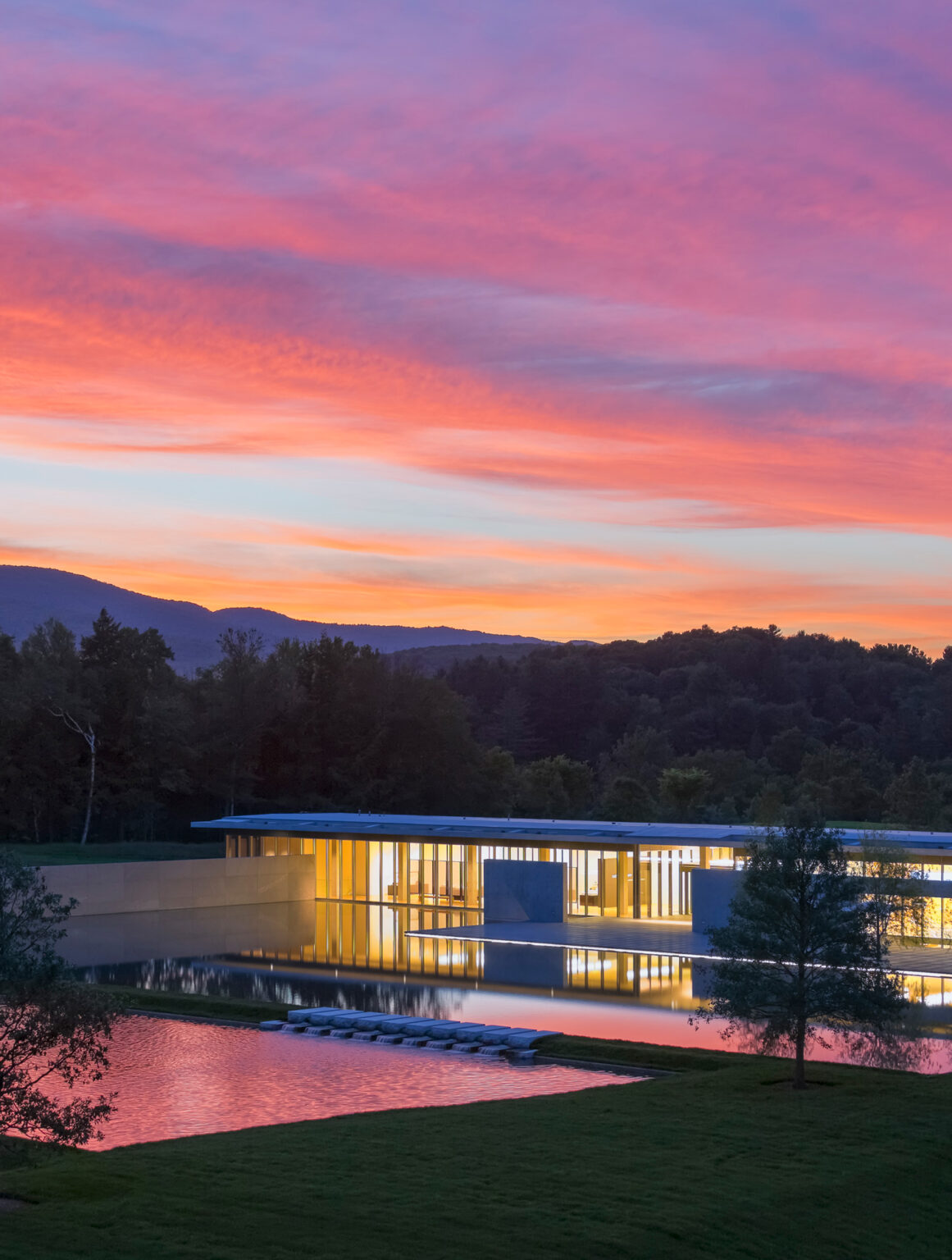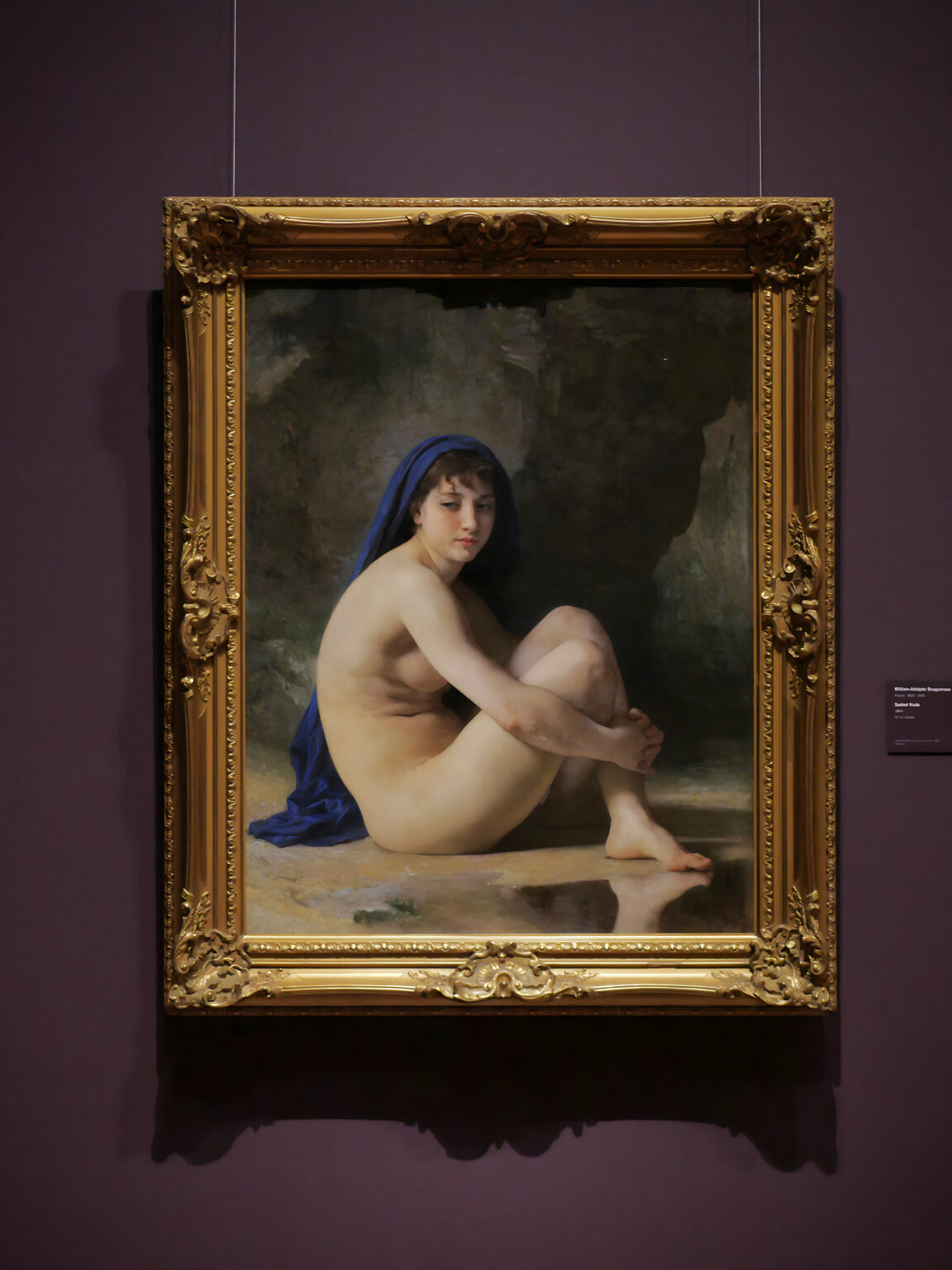Writing and photography by Justin Negard
In 1950, Sterling and Francine Clark made a decision.
It was time to give back. As heirs to the Singer Sewing Machine fortune, the Clarks spent much of their life avidly collecting artwork from around the globe. Their passion was for Italian, Dutch and Flemish paintings dating back as far as the Renaissance. They were also drawn to Impressionism, thanks to the years they lived in Paris, and a large portion of their collection reflected that.
They founded the Sterling and Francine Clark Art Institute, commonly called the Clark, in the collegiate town of Williamstown, MA, and began construction in 1952. By 1955, the museum was open to the public, with many works by Winslow Homer, Edgar Degas and Pierre-Auguste Renoir on display for the first time in decades.
Seventy-three years later, the Clark has grown from the collection of one family to a 140-acre multifunctional campus, including a museum, research center, nature trails and more. It’s a destination point for art lovers ranging from the pseudo sophisticated to the beret-wearing aficionados. The drive from northern Westchester might be a tall order, but art lovers believe it is worth the two-hour journey to visit this institution.

Research and restoration
Beyond the museum, the Clark’s campus has expanded since its opening in 1955. The Manton Research Center, which is attached to the museum, was built in 1973.It’s home to the Clark’s library, auditorium, reading room and additional works in their permanent collection, which are available to study. This is a space for students to work, especially those who attend the neighboring Williams College, which holds classes for its art history graduate program at the Manton Research Center.
Also of note is the Lunder Center at Stone Hill, which is just over the hill from the busier side of the campus. The Lunder Center has galleries and a cafe, as well as the largest regional art restoration center in the United States. Athletic showoffs can trek to the Lunder Center by foot on the winding nature trails throughout the grounds of the Clark. Driving is an option, too, for those allergic to walking sticks and fishing hats.

Go outside
Nature is a big part of the Clark’s 140-acre campus. Visitors receive two maps upon arrival; one is for the permanent collection and exhibitions, and the other is for the many trails throughout the hills and meadows of the area.
Remember, this is the Berkshires. Natural beauty is sort of its thing. The Clark’s staff are quick to brag about the colors of the campus throughout the year, urging visitors to see the change during all four seasons.
Each trail includes permanent outdoor installations by artists such as Thomas Schütte, William Crovello and Jenny Hozier, among others. The pieces were carefully selected and positioned to optimize the visitor’s interaction with both the piece and the nature around it. Schütte’s “Crystal,” for example, is an angular wood and copper structure that allows viewers to enter and exit with a carefully determined viewpoint of the nearby meadows and trees. These details create a unique hiking experience beyond the standard park trails back home.

Take the ride
While the Clark isn’t right around the corner, it is worth the drive. The art collection rivals most institutions in the world, and it will scratch your New York City itch at a far lower price and a much more peaceful commute. Best of all, it’s a year-round destination conveniently located next to the seasonal fun of the Berkshires and neighboring Vermont.
So make the trip. Hike outside amongst the flowers or simply view them through the eyes of Monet. There’s something here for most kinds of people, and it is an excellent day trip on any quiet weekend. You’ll be glad you went.
Beginning January 2, 2024, the Clark will be free to all through March 31, 2024. View “50 Years and Forward Works on Paper Acquisitions” from December 16, 2023 through March 10, 2024.
This article was published in the January/February 2024 edition of Connect to Northern Westchester


Justin is an award-winning designer and photographer. He was the owner and creative director at Future Boy Design, producing work for clients such as National Parks Service, Vintage Cinemas, The Tarrytown Music Hall, and others. His work has appeared in Bloomberg TV, South by Southwest (SXSW), Edible Magazine, Westchester Magazine, Refinery 29, the Art Directors Club, AIGA and more.
Justin is a two-time winner of the International Design Awards, American Photography and Latin America Fotografia. Vice News has called Justin Negard as “one of the best artists working today.”
He is the author of two books, On Design, which discusses principles and the business of design, and Bogotà which is a photographic journey through the Colombian capital.
Additionally, Justin has served as Creative Director at CityMouse Inc., an NYC-based design firm which provides accessible design for people with disabilities, and has been awarded by the City of New York, MIT Media Lab and South By Southwest.
He lives in Katonah with his wonderfully patient wife, son and daughter.










